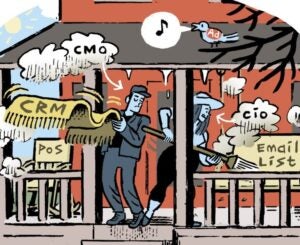In a market increasingly dominated by premium streaming environments and evolving measurement standards, some marketers believe they’re still getting the full value from online video (OLV). But they’re not. As buying behavior shifts to match newly defined placement types, many are unknowingly investing less in the formats that once delivered reliable performance.
The latest IAB Tech Lab video classification updates have introduced much-needed clarity to a historically messy taxonomy. But with clarity, there are unintended consequences. In redefining what qualifies as instream versus standalone or interstitial, the new standards have caused confusion across the buy side. As a result, valuable inventory, now categorized differently, is being deprioritized or rejected, even though its performance hasn’t changed.
That’s a mistake.
OLV hasn’t lost its effectiveness, just some legacy labels. Marketers who retreat from it now risk breaking their funnels by eliminating a crucial mid-funnel workhorse. In today’s CTV-first environment, OLV is not a redundancy. Rather, it serves as a release valve that can bridge the reach of CTV and the conversion strength of social.
The danger of overcorrection
Some marketers are misreading the current moment in the evolution of TV and video. They’re reacting to taxonomic shifts, not performance signals. We’ve seen publishers report that buyers are now rejecting inventory they’ve happily invested in for years, simply because a new classification says it no longer qualifies as “instream.”
However, the core characteristics of that inventory haven’t changed. It still performs. It still connects. And it still plays a vital role in leading consumers down the funnel.
CTV continues to scale rapidly and has earned its place as a cornerstone for brand-building efforts. Its reach, creative potential and alignment with premium content make it a powerful tool for driving awareness. But CTV’s value doesn’t end at the top of the funnel. As new formats emerge and measurement capabilities improve, it’s playing an increasingly nuanced role across the customer journey.
When paired strategically with online video, CTV becomes even more effective by serving as the foundation of a total video approach. OLV can help brands build on CTV-driven interest and move audiences toward deeper engagement and consideration. Together, they enable marketers to deliver cohesive campaigns with measurable outcomes across the funnel.
Social saturation and the case for rebalancing
Amid marketplace shifts, some brands are being tempted to redirect OLV spend into social platforms like TikTok, Instagram or YouTube. These ecosystems promise real-time optimization and proven performance. However, many brands are already heavily invested (if not overinvested) here.
Overreliance on social introduces challenges: diminishing returns, walled gardens and attribution blind spots. YouTube, in particular, often straddles categories, which makes it a tricky channel to measure. Sometimes it’s viewed as social; sometimes it’s its own thing entirely.
Social is broadly distributed and cost-effective. But for many buyers, it’s become the “easy button,” offering efficient CPMs, streamlined buying and closed-loop attribution that’s simple to report on, even if it’s not always the best strategic fit.
Marketers looking for true omnichannel efficiency need to resist the urge to over-index on what’s easiest to justify. While social is undeniably part of a healthy lower-funnel strategy, it can’t replace the unique value of OLV, especially when the goal is full-funnel cohesion. The two channels should complement rather than compete with each other.
Modernizing OLV
As the video landscape evolves, so do the tools needed to navigate it. The Tech Lab’s updated classification framework has introduced a new level of transparency, but it has also surfaced challenges in how inventory is defined and valued. Leading marketers aren’t waiting for the dust to settle; they’re leaning into smarter infrastructure and automation to up-level the clarity, control and efficiency of their OLV investments.
Curated marketplaces are a critical part of this evolution. They offer a streamlined way to access high-quality, contextually relevant inventory that aligns with campaign goals, without having to sift through the broader noise of the open exchange. Likewise, video.plcmt allows buyers to tailor deals based on format, screen, context and even publisher preferences, enabling more precise alignment with full-funnel strategies.
At the same time, AI-powered buying tools are reducing the operational burden of OLV. These technologies can automate workflows and help marketers make smarter decisions in real time. By analyzing performance signals, optimizing placements and surfacing new opportunities, AI tools ensure that buyers can stay focused on strategy, creative and outcomes rather than classification nuances.
Don’t break the funnel
The most successful brands aren’t picking sides among CTV, OLV and social; they’re orchestrating the three into a cohesive plan. Pulling back from OLV today may feel like a simplification, but it’s more likely to create blind spots and bottlenecks.
OLV is not a relic of the past; it’s targetable, measurable and flexible. And, most importantly, it still performs. When deployed intentionally, it becomes the glue that holds a modern video strategy together.
“On TV & Video” is a column exploring opportunities and challenges in advanced TV and video.
Follow PubMatic and AdExchanger on LinkedIn.
For more articles featuring Nicole Scaglione, click here.

















